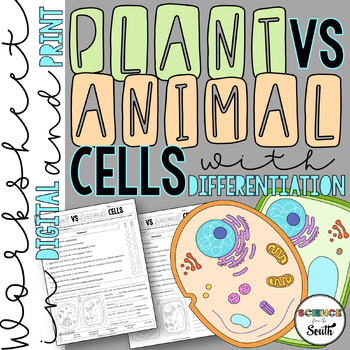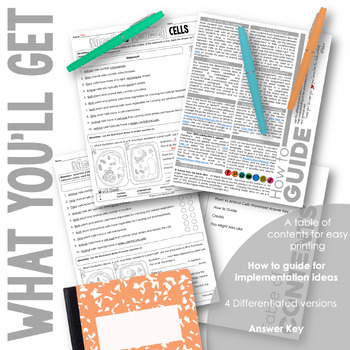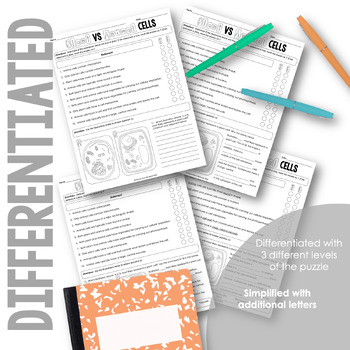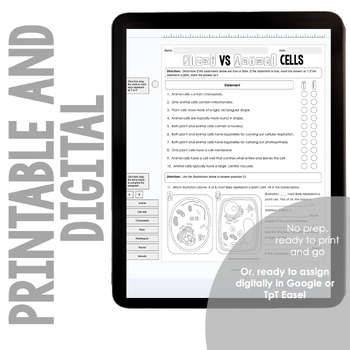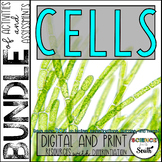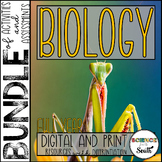Plant vs Animal Cells Worksheet Activity for Comparing Plant and Animal Cells
- PDF
What educators are saying
Also included in
- Square and rounded shape. Connected and sporadic. Cell walls and no cell walls. Large, central vacuoles and small vacuoles. These are key characteristics that our students need to understand about plant and animal cells. Using the resources in this bundle will allow your students to explore, inPrice $16.00Original Price $25.00Save $9.00
- Your students can learn about cells, their structure, and function! But do they have access to a huge cells unit bundle of differentiated activities and assessments in digital and print to help them master cell theory, cell structure and function, and cell energy? By actively engaging in note-takingPrice $57.00Original Price $81.75Save $24.75
- Your students can use any biology curriculum bundle to learn about biology concepts, including characteristics of life, biochemistry, classification, cells, genetics, evolution, and ecology with any biology bundle. But, what if you had a full year of biology creative curriculum activities, assessmenPrice $230.00Original Price $401.25Save $171.25
Description
Your students can identify similarities and differences between plant and animal cells. They can even identify the structure and function of the cell organelles found in each cell type. But, what if they could have fun while showing you their understanding of plant and animal cell structures and organelles? This plant vs animal cells worksheet activity is a perfect test review, practice assignment, or assessment with four levels of differentiation to meet students' needs at their individual level or ability as you assess their understanding of cells. As the teacher, you simply print and go with the no-prep, ready to use resource. Or, assign the resource digitally in Google Slides or TpT Easel.
So, grab something to write with and download the Plant vs Animal Cells Worksheet. The activity is just what you need to add to your Biology lesson plan to engage your middle school or high school students in a meaningful and rigorous learning activity while impressing your administrators. What are you waiting for? Print and go! Or assign the comparing plant and animal cells assessment digitally and watch your biology students have fun while learning about the different cell types.
You Will Get:
- A no-prep, printable pdf resource download.
- A table of contents for organizing and printing.
- 4 differentiated versions of the maze (simplified A-clues and word bank, simplified B-word bank, intermediate-no word bank, and advanced-constructed response)
- A how to guide with ideas on engaging your students in the activity, use of the resource, further differentiation, and more.
- Answer key
- Google Slides version of the resource.
- TpT Easel activity.
You Will Like:
Cell Organelles and Structures Maze Worksheet
Cell Organelles and Structures Quiz
Plant and Animal Cell Organelles and Structures Tarsia Puzzle
Plant and Animal Cells Bundle of Activities and Assessments
BIG Biology Curriculum Bundle of Activities and Assessments ***Bundle and SAVE over $100***
Feedback and Followers:
Did you know that you can receive credit towards future TpT purchases by reviewing this product? Leave a review at the product page after you download the resource or through “My Purchases”. Use your TpT credits that you earn to purchase other resources.
Do you want to be the first to know about new resources, sales, and free resources? Sign-up here to get email notifications and my Mix it Up Activities and Assessment eBook with templates. And don't forget to click the green star next to my store logo to become a follower. Connect in other ways using the links below! We love to see resources in action. Share them at @sciencefromthesouth to receive a FREEBIE!
Happy Teaching!
Heather

